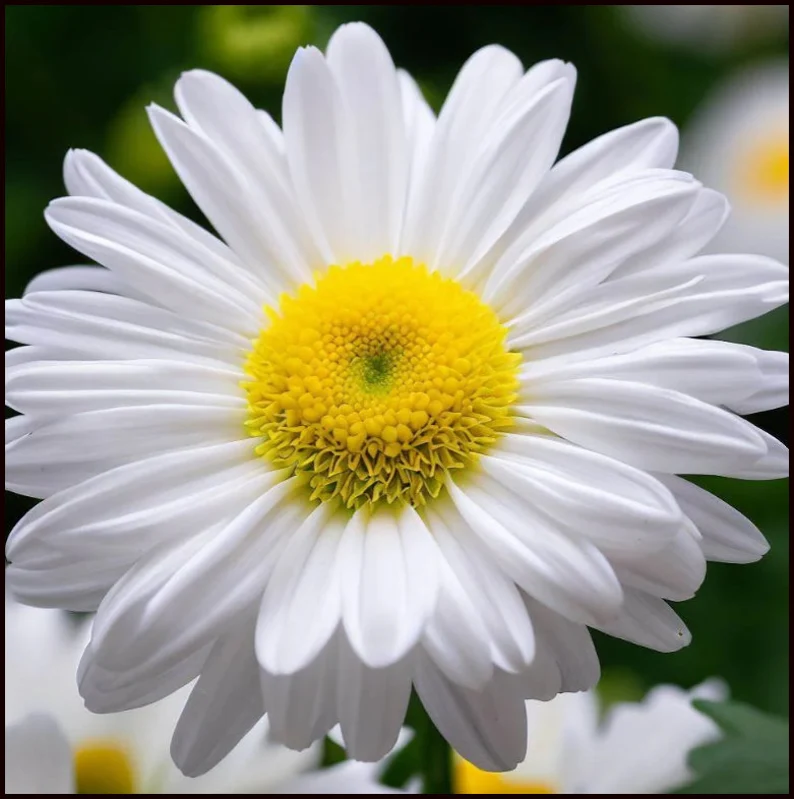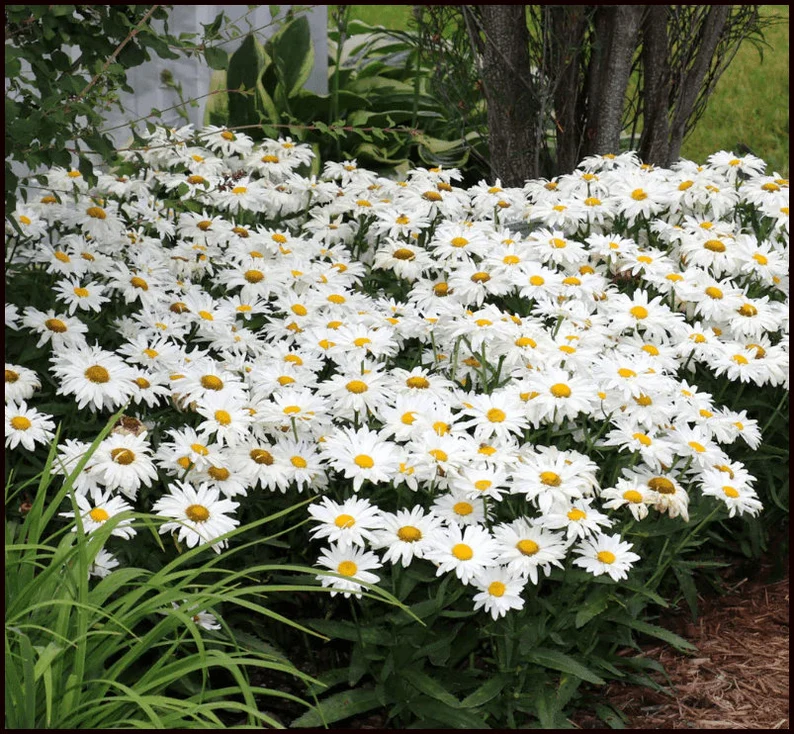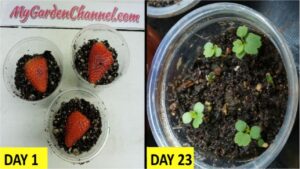Looking to purchase Alaska Daisy?
Try checkout our shop page or head over to our Esty page at MyGardenchannelCOM
The Alaska Daisy (Leucanthemum x superbum ‘Alaska’) is a stunning perennial flower known for its classic white petals and bright yellow centers. A member of the Asteraceae family, this daisy variety is cherished for its hardiness, long bloom time, and ability to thrive in various growing conditions. Whether used in garden borders, wildflower meadows, or as a cut flower, the Alaska Daisy is a versatile and low-maintenance plant that brings beauty to any landscape. This guide provides detailed information on growing, caring for, and maintaining Alaska Daisies to ensure they flourish year after year.
1. Understanding Alaska Daisy

The Alaska Daisy is a cultivar of the Shasta Daisy (Leucanthemum x superbum) and is well-known for its ability to thrive in cooler climates. This variety is particularly valued for its sturdy stems, large flowers, and prolonged bloom period.
Growth Characteristics
- Height: 2-3 feet
- Width: 12-18 inches
- Flower Color: White petals with a yellow center
- Bloom Time: Early summer to fall
- Lifespan: Perennial in USDA zones 4-9
- Growth Rate: Moderate to fast
Climate and Hardiness
Alaska Daisy is well-suited for temperate climates and can withstand cold winters. It thrives in USDA hardiness zones 4-9, making it an excellent choice for gardeners in a variety of regions. While it is drought-tolerant once established, it benefits from occasional watering during dry spells.
2. Planting and Soil Requirements
Proper planting and soil preparation are essential for the successful growth of Alaska Daisies.
Ideal Planting Time
The best time to plant Alaska Daisies is in the spring or early fall. Planting during these seasons allows the roots to establish before extreme temperatures set in.
Soil Preferences
- Type: Well-draining, loamy soil
- pH Range: Slightly acidic to neutral (6.0-7.0)
- Amendments: Organic matter such as compost or peat moss can improve soil fertility and drainage.
Planting Depth and Spacing
- Space plants 12-18 inches apart to allow for air circulation.
- Dig a hole twice as wide as the root ball and plant at the same depth as the nursery container.
- Water thoroughly after planting to help establish roots.
3. Sunlight and Watering Requirements
Alaska Daisies are sun-loving plants that require proper moisture levels for optimal growth.
Sunlight Needs
- Full sun is ideal, requiring at least 6 hours of direct sunlight daily.
- In hotter climates, partial shade during the hottest part of the day can help prevent stress.
Watering Schedule
- Newly Planted Daisies: Water deeply 2-3 times per week for the first month.
- Established Plants: Water once a week during dry periods.
- Overwatering Risks: Avoid soggy soil, which can lead to root rot.
4. Fertilization and Nutrient Requirements
While Alaska Daisies are not heavy feeders, proper fertilization enhances their growth and flowering.
Best Fertilizer Choices
- A balanced, slow-release fertilizer (10-10-10) in early spring promotes healthy growth.
- Organic options such as compost or fish emulsion provide a nutrient boost.
Feeding Schedule
- Apply fertilizer in early spring when new growth emerges.
- A second application in mid-summer supports prolonged blooming.
- Avoid excessive fertilization, which can lead to excessive foliage growth at the expense of flowers.
5. Pruning and Deadheading
Regular pruning and deadheading keep Alaska Daisies looking their best and encourage continuous blooming.
Deadheading Flowers
- Remove spent blooms regularly to prolong flowering.
- Cut just above the next set of healthy leaves to encourage new growth.
Seasonal Pruning
- In late fall, cut back stems to about 2-3 inches above the ground after the first frost.
- In early spring, remove any dead or damaged stems to promote healthy regrowth.
6. Propagation Methods
Alaska Daisies can be propagated through division or seeds.
Division
- Divide clumps every 2-3 years in early spring or fall to prevent overcrowding.
- Dig up the plant, separate the root clumps, and replant in well-prepared soil.
Growing from Seeds
- Sow seeds indoors 6-8 weeks before the last frost.
- Transplant seedlings outdoors after the danger of frost has passed.
- Direct sowing in spring is also an option, though blooms may appear later in the season.
7. Pest and Disease Management
Alaska Daisies are generally resistant to pests and diseases, but occasional issues may arise.
Common Pests
- Aphids: Small sap-sucking insects that can be controlled with insecticidal soap.
- Slugs and Snails: Can damage foliage; use organic deterrents like diatomaceous earth.
- Spider Mites: Cause yellowing leaves; spray with neem oil if infestations occur.
Common Diseases
- Powdery Mildew: White, powdery spots on leaves; improve air circulation and avoid overhead watering.
- Root Rot: Caused by excessive moisture; ensure well-draining soil.
8. Winter Care and Overwintering
Alaska Daisies are cold-hardy but benefit from winter protection in extreme climates.
Mulching for Protection
- Apply a 2-3 inch layer of mulch around the base of the plant to insulate roots.
- Use straw, pine needles, or shredded leaves as mulch material.
Cutting Back for Winter
- In colder regions, trim stems back to ground level after the first frost.
- In milder climates, leaving some foliage intact can provide winter interest.
9. Landscaping Uses and Companion Plants
Alaska Daisies are highly versatile and complement a variety of garden styles.

Landscape Applications
- Border Planting: Adds a classic cottage garden look.
- Wildflower Meadows: Pairs well with native perennials and attracts pollinators.
- Cut Flower Gardens: Long-lasting blooms make excellent floral arrangements.
Companion Plants
- Lavender: Provides a fragrant, contrasting purple hue.
- Echinacea (Coneflower): Adds variety with its bold colors.
- Salvia: Attracts pollinators and offers a striking color contrast.

